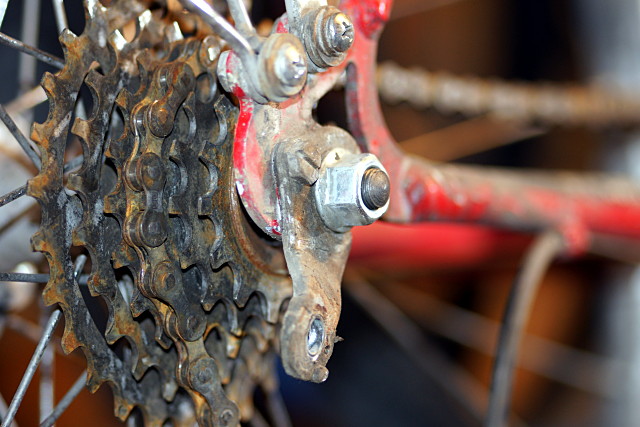
Hmm, where’d that derailleur go? I swear it was there this morning.
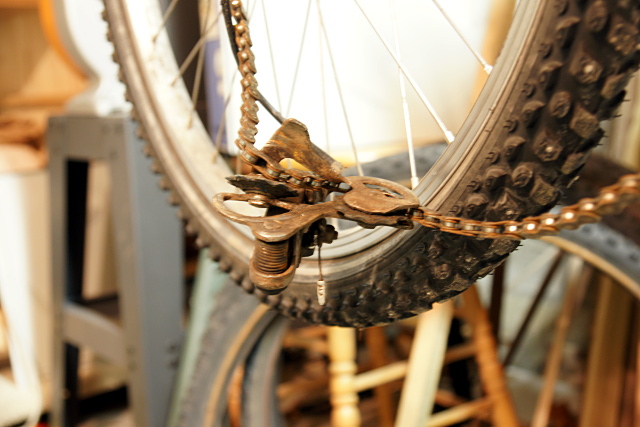
Oh, there it is. Fixing this may require just a little more than the normal amount of elbow grease.
Random Wanderings and Wonderings

Hmm, where’d that derailleur go? I swear it was there this morning.

Oh, there it is. Fixing this may require just a little more than the normal amount of elbow grease.
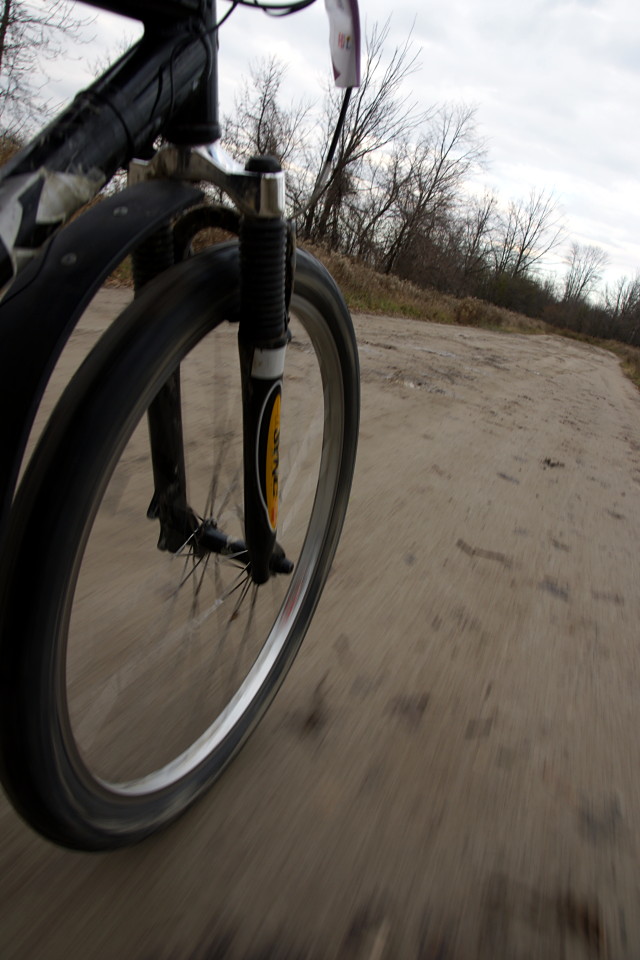
It feels like months since I’ve gotten out for a good ride but I was finally able to hit the (dirt) road yesterday, heading out into the farthest reaches of Scarborough. With the country roads, fields of corn, tangled meadows, and overgrown forests, you’d never know that you were still inside Toronto on the municipal street grid. But then you pass one of the familiar bike route signs (seen here at the rural intersection of Beare Road and the wonderfully-named Plug Hat Road) and you know that you’re still within reach of civilization:
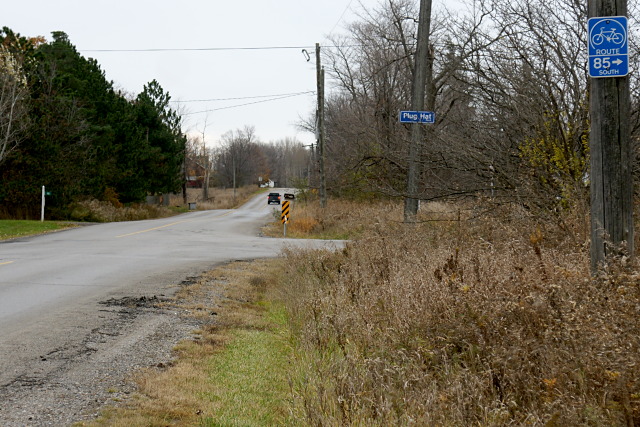
This isolated corner of the city is plagued by illegal dumpers and it shows in the informal signage along the roads:
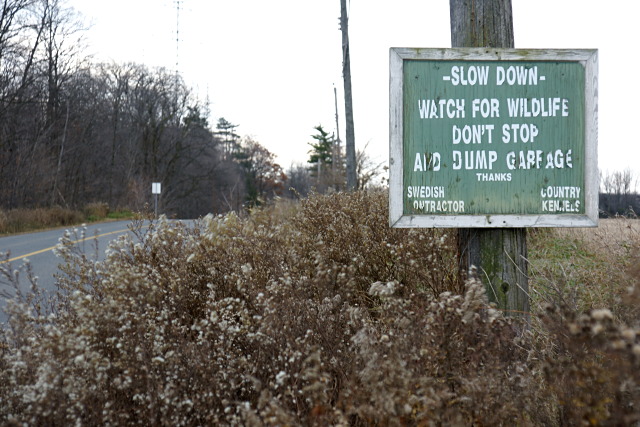
In the last couple of years, northeastern Scarborough and neighbouring northern Pickering has become one of my favourite cycling destinations. The best thing about riding there (or almost anywhere) at this time of year and in cool, rainy weather is that you basically have trails and roads to yourself.
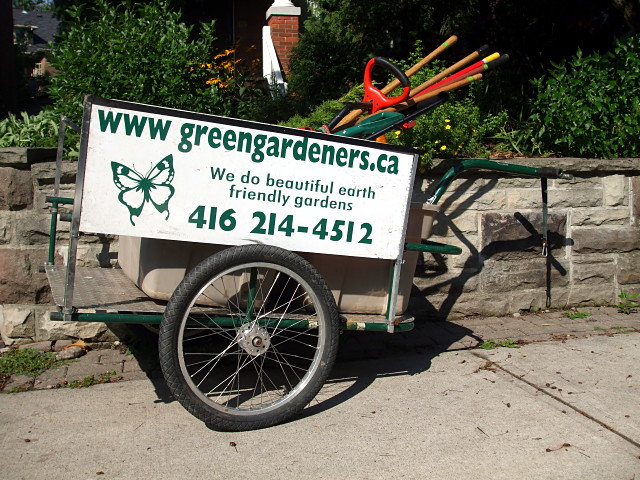
Despite the increasing numbers of people who ride their bikes to work, relatively few people use their bikes as work vehicles.
I frequently pass as many as a dozen landscaping crews on my daily ride through Rosedale and Summerhill, usually with big pickup trucks and trailers hauling all manner of two-stroke trimmers, mowers, and blowers. So it was nice to pass by this bike trailer filled with traditional hand tools the other day. Kudos to Green Gardeners.
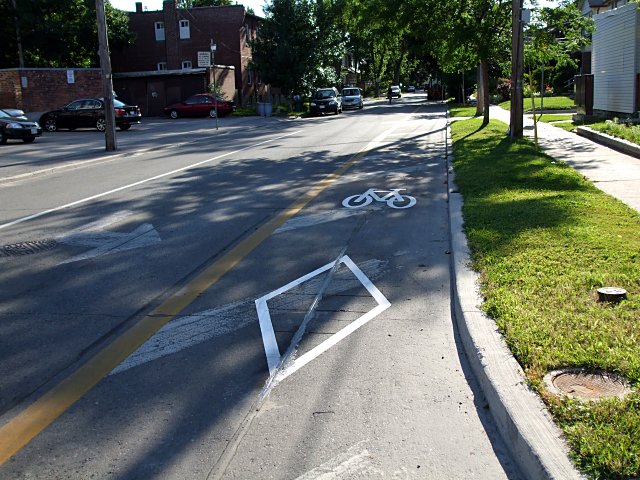
It’s been three months since any progress has been made on the semi-completed bike lane on Chester Hill Road between Broadview and Cambridge Avenues. Just when I was beginning to give up hope that work would ever resume on this project that started way back in November, the lane was finally painted with two diamond and bicycle stencils today. Some work remains to be done—the temporary stop sign at Cambridge needs to be replaced by a permanent sign, and the signs prohibiting turns onto Chester Hill from Broadview must be updated to allow cyclists to make the turn—but once again I have some hope that the lane will be finished before the end of time.
To recap the work done so far:
Late November: A 70 metre line of yellow paint goes down marking the lane. Two bike lane signs are attached to poles, but one of them remains covered by black plastic.
Mid-April: The second sign is uncovered and a temporary stop sign is erected at the Cambridge Avenue end of the lane, held up by three sandbags.
July: Two stencils are painted to mark the lane.
Surely there’s a joke in there somewhere.
At just 70 metres long, this is probably the city’s shortest bike lane. At close to eight months and counting since work started, it’s taking an unbelievably long time to slap down some paint and post some signs. Back in April, I wrote that the early spring progress on this lane was a good sign because the cynic in me had expected completion of the lane to “languish well into the summer.” Um…
Tires are frequently a forgotten aspect of bicycle maintenance and this is what happens when you don’t check them regularly:
First you wear a little hole in your tread: 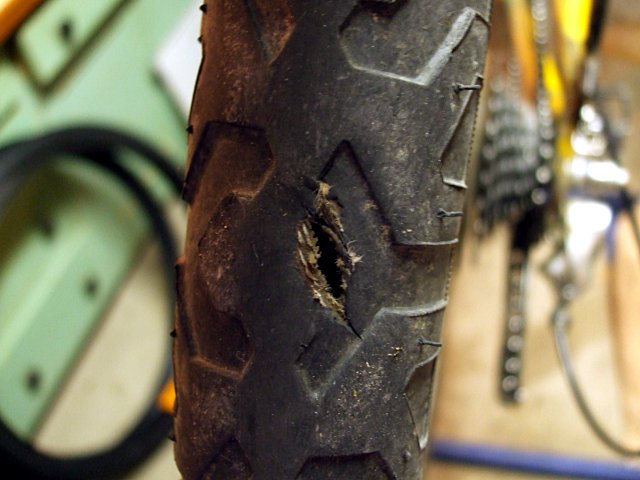
Then your usually indestructible Mr. Tuffy tire liner wears through: 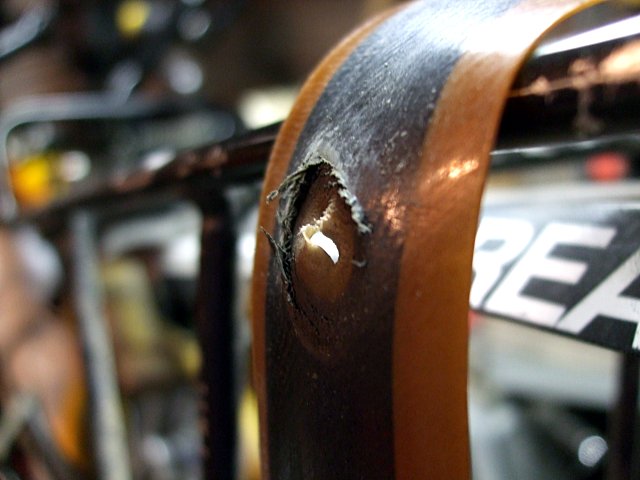
Then your tube blows out while you’re speeding down Don Mills Road:
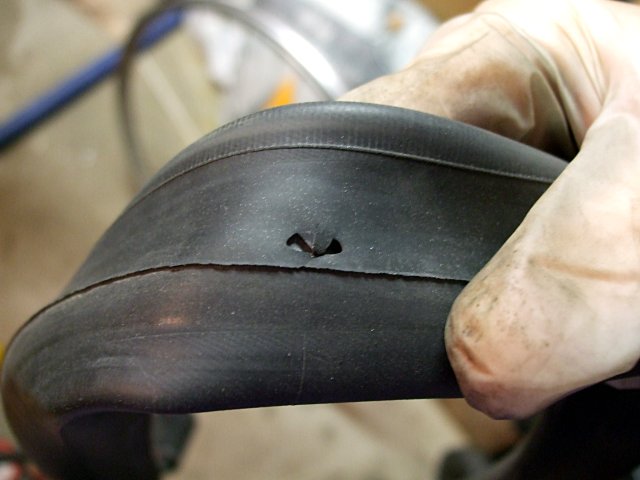
And finally, you call your better half to come and rescue you from the 2-hour walk home.
I can’t complain, though; I knew the tire was nearing the end of its useful life but ignored the now-obvious warnings through a couple of rides. Since 2003, this set of tires had seen about 12,000 km on concrete, asphalt, sand, rocks, dirt, mud, grass, loose gravel, snow, ice, slush, and pretty much every other surface you could encounter in southern Ontario and I’d been planning since the spring to replace them anyway. As usual, I just needed that extra little push to actually get the work done.
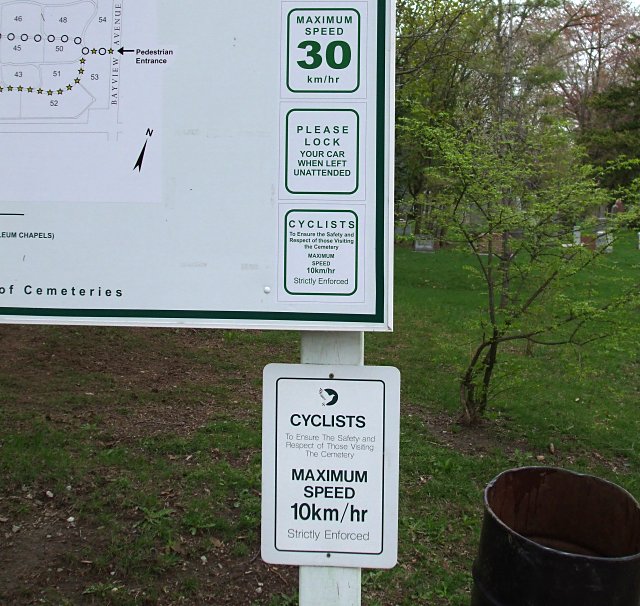
If you look closely at the advisory signs when you enter Mount Pleasant Cemetery, you may notice something peculiar: a reasonable speed limit of 30 km/h for cars and just 10 km/h for bicycles. Not only that, but while drivers are helpfully advised to lock their unattended cars, cyclists are warned—twice!—that their speed limit is “strictly enforced,” and that it is to “ensure the safety and respect of those visiting the cemetery.” Apparently, a bike at 15 km/h is more disturbing and dangerous than a car travelling twice that speed.
What makes this a silly restriction is not so much the different speed limits or the extra warnings for cyclists, but the ludicrously slow speed cyclists are supposed to maintain. I did try riding at 10km/h through the cemetery one day; it’s a very difficult speed to maintain. I was passed by several non-Roger-Bannister-like joggers who were bouncing along at, by rough estimate, about 12 km/h. My more typical leisurely pace through these paths is around 20 km/h.
As for being strictly enforced, none of the cemetery employees I encounter (including security) on my daily commutes ever do more than wave and smile as I fly recklessly past them at twice the limit. Either no one knows how slow 10 km/h really is or they think it’s as silly as I do.
Still, cyclists have it better than inline skaters; they’re not allowed in the cemetery at all.
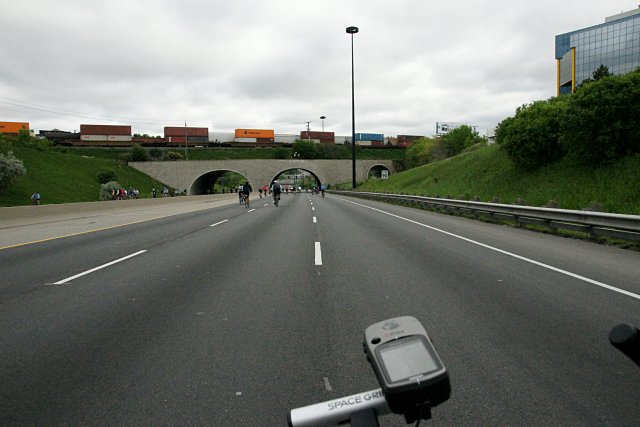 Now that I’ve finally ridden the Ride for Heart, I have a few suggestions for improving the experience, getting more people involved, and making it safer:
Now that I’ve finally ridden the Ride for Heart, I have a few suggestions for improving the experience, getting more people involved, and making it safer:
All of these suggestions would get more people on the road and probably raise more money. If these changes were made, I’d anticipate a minimum of 150,000 cyclists taking part. Just set up tables at each entrance, sell wristbands for $5–$10 and let people cruise at will.
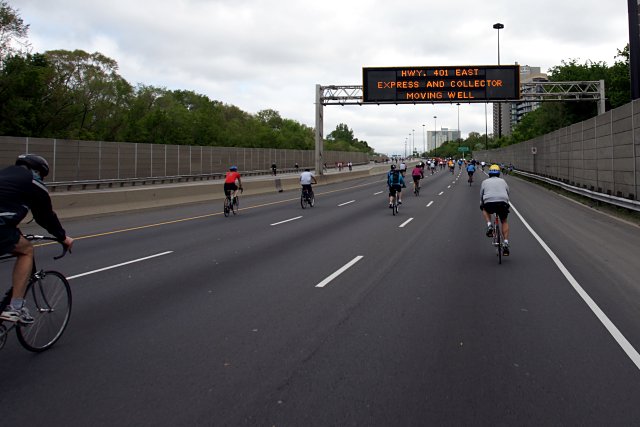
After years of stubbornly refusing to wake up at 5 a.m. on a Sunday morning, I finally made it out to the Ride for Heart today. I thought it went fairly smoothly. I got to Exhibition Place just before 6:30 a.m. and settled into the starting chute for the 75 km ride at 6:32, about 15 minutes before the scheduled start. Quite a number of late arrivals rode along the adjacent sidewalk or lawn to get to the front instead of taking up their spots at the end of the line. Nice.
Although well within my range once I’m in cycling shape for the year, today’s total ride length of 98 km (including 23 km round-trip from home to the starting/finish line) over four and a half hours was two hours and 40 km longer than I’d gone since October. You betcha I’m sore. But it’s a good sore. And next weekend, I’ll ride farther.
Right at the front of the starting chute was a large group of riders who raced the entire 75 km. I don’t know who won, but I do know that the peloton (and its police escort) lapped me around the 40 km mark.
I was surprised by the number of people who got flat tires or were injured along the ride. I stopped to ask at least a dozen people with flats if they needed assistance (one of the moral duties of those who carry tool kits), but they all waved me on. Injuries along the route included a guy who was screaming in pain as he was hoisted onto an ambulance stretcher, a woman with a nasty gash on her head, several other people receiving roadside attention from paramedics, and at least two other ambulance sightings. All but one of the injuries I saw were on straight sections of the track, and the course wasn’t really that crowded after the start. Another guy was walking with his bike tilted up on the rear wheel, the badly twisted front wheel hanging uselessly in the air.
While I was pondering the causes of all the accidents, a woman passed me on the right, looked back at me as her rear wheel slowly drew even with my front, said, “Passing on the left,” and then cut right into my wheel. I would almost certainly have joined the injured if I hadn’t braked in time or if someone had been behind me. Just goes to show you that idiots drive all kinds of vehicles.
It was good to finally get out to this event, although it felt a bit like Friday’s Big Critical Mass Adventure took the wind out of some of the novelty.
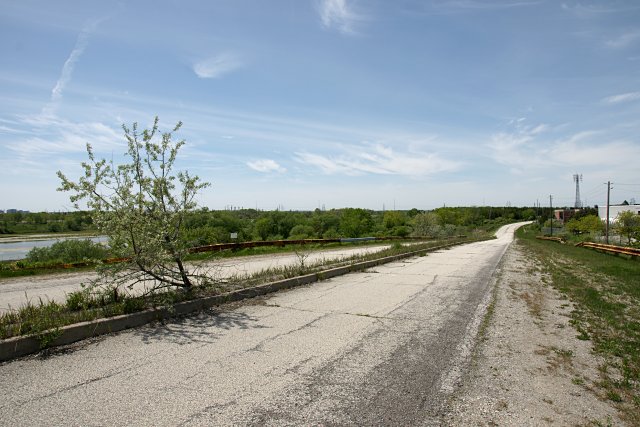
Way up in the very northwestern corner of the city, the old Indian Line used to mark the boundary between Etobicoke and Peel Region (Mississauga and Brampton). The road carved its way through farm fields and across a bridge over the Humber River before continuing north past Steeles Avenue. Most of the old road was effectively wiped out by the initial construction and subsequent widening and extending of Highway 427 starting in the late 1960s and continuing through the early 1990s. Other portions of the road fell victim to realignments of Albion Road, Steeles Avenue, and Regional Road 50 heading north out of the city. But as with other abandoned roads in the city, a few stretches of the old roadway still exist. A tour and more pictures follow.
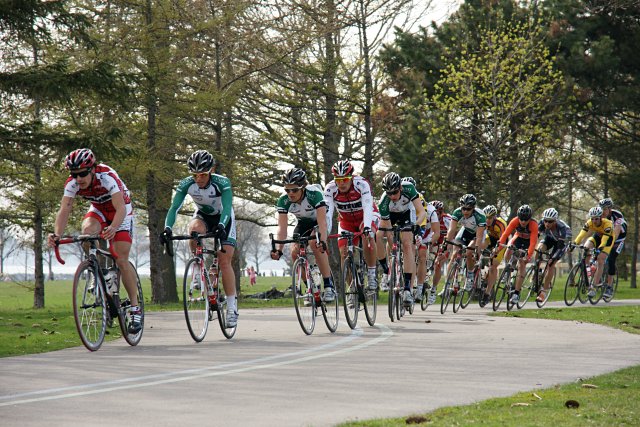
I stumbled across the Zig Zag-by-the-Lake bike races in Marilyn Bell Park on Sunday afternoon. The riders all looked quite relaxed as they zipped around the course at what seemed to be about twice my best speed. Consider this a sneak preview of next month’s Toronto Criterium.
More pictures below the fold.